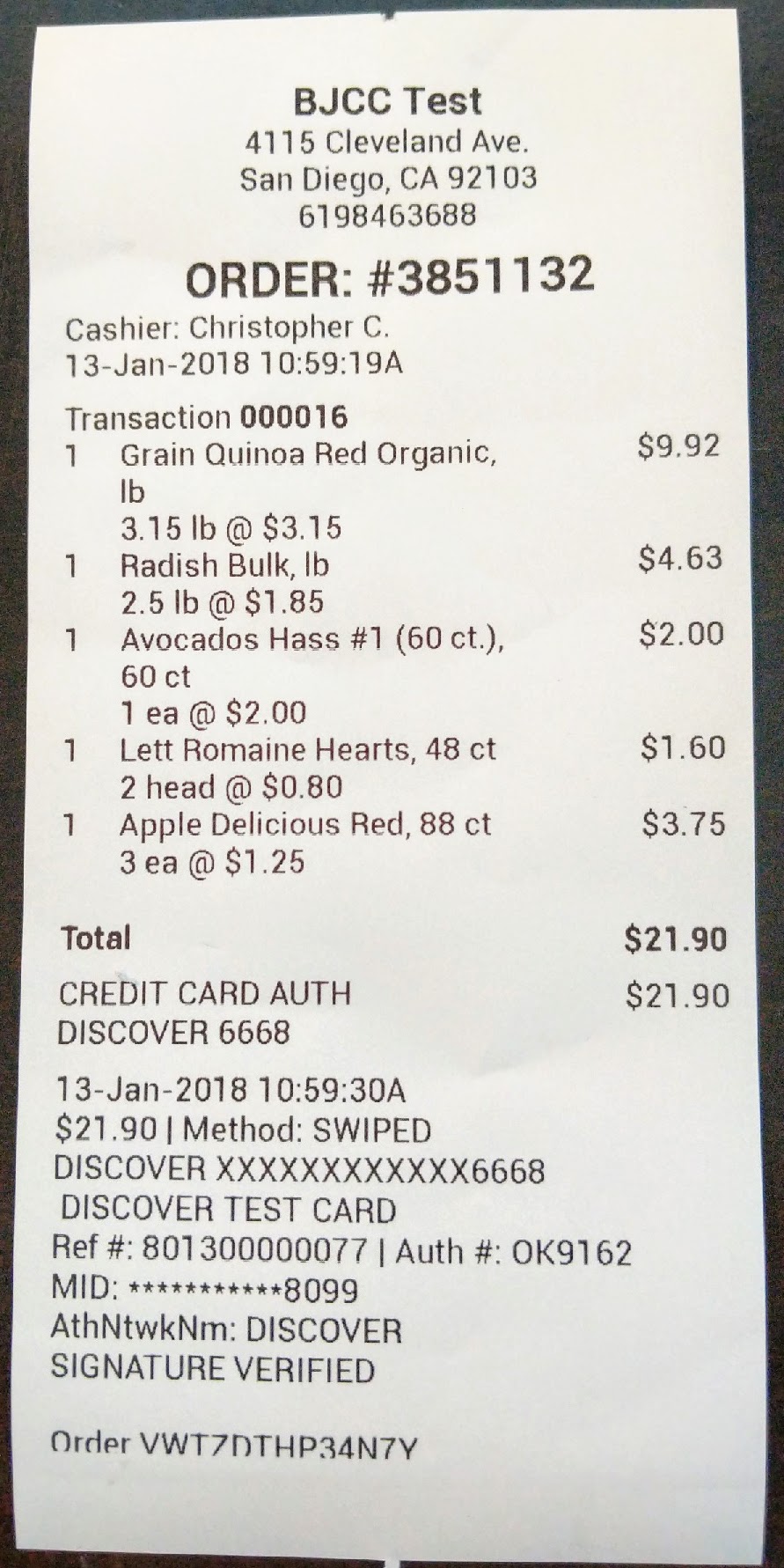Using Secure Pay, when the customer is done and chooses to "Print Receipt", all of the line items on the receipt are numbered "1" on the left hand side, see image. How can I get either no numbering or have it number the lines sequentially, 1 - 2 - 3 - etc...?
I'm building a custom Android application. I build the Order with a call to
I call Secure Pay using
As a bonus question... You may notice I've added text in the "item name" that includes the unit name and quantity. I've tried tmpItem.setUnitName but that does not show up on the receipt and tmpItem.setUnitQty only accepts integers which doesn't work for stuff sold by the pound.

I'm building a custom Android application. I build the Order with a call to
mOrder = orderConnector.createOrder();I create the LineItems and set the values, then add them to the order using
tmpItem = new LineItem();
tmpItem.setName("Avocados");
tmpItem.setPrice(250);
orderConnector.addCustomLineItem(mOrder.getId(), tmpItem, false);Everything works fine - the order is created, has the correct line items, total, etc.
I call Secure Pay using
Intent intent = new Intent(Intents.ACTION_SECURE_PAY); intent.putExtra(Intents.EXTRA_AMOUNT, 1030); intent.putExtra(Intents.EXTRA_ORDER_ID, mOrder.getId()); startActivityForResult(intent, CSPConstants.SECURE_PAY_REQUEST_CODE);
As a bonus question... You may notice I've added text in the "item name" that includes the unit name and quantity. I've tried tmpItem.setUnitName but that does not show up on the receipt and tmpItem.setUnitQty only accepts integers which doesn't work for stuff sold by the pound.
